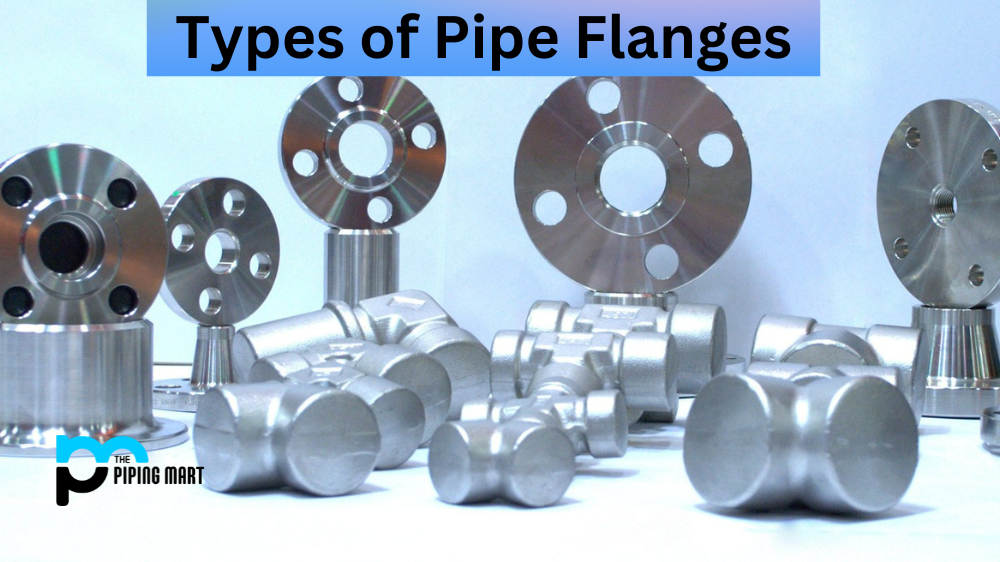Pipeline isolation is integral to many industrial processes, especially in the oil and gas industry. To conduct maintenance, repairs, or replace defective parts, it’s crucial to isolate specific pipeline sections. This is where blind flanges come in. A blind flange is a type of pipe flange that closes off the end of a pipeline. A safety device isolates the pipeline section and assures safety during maintenance or repair work. This blog post will examine blind flanges and their importance in pipeline isolation.
What are Blind Ranges?
Blind flanges are a crucial component in the piping system and play a significant role in ensuring the smooth flow of various fluids. These flanges are designed to seal off pipe ends, making them ideal for applications requiring easy inspection or maintenance access. The “blind” part of its name refers to the fact that it does not have an opening; instead, it is used to close or blind off a line.
But why specifically choose Blind Flanges over other types? First and foremost, they offer exceptional leak-proof capabilities due to their solid construction. This makes them suitable for handling high-pressure systems without any risk of fluid leakage. Additionally, their simple design allows for easy installation and removal without worrying about gaskets or bolts getting in the way.
Types of Blind Flanges
Blind flanges come in different types, depending on the pressure and temperature requirements of the pipeline. For low-pressure and low-temperature applications, a blind plate flange made of carbon steel can be used. On the other hand, for high-pressure and high-temperature applications, a blind spectacle flange or a bleeder blind flange is needed. A blind spectacle flange has a small hole in the center, which can be opened to release pressure or allow fluid flow. Meanwhile, a bleeder blind flange has a valve that can be opened to bleed off pressure without completely removing the blind flange.
Blind Flanges and Safety
Using blind flanges during pipeline isolation is crucial to ensure safety. By closing off the pipeline, there’s no risk of gas or liquid flowing out of the pipeline during maintenance or repair work. This isolates the pipeline section and prevents any harm to workers or the environment. Blind flanges also prevent the ingress of foreign material, which can cause pipeline blockages and even endanger the safety of workers who may be clearing the blockage.
Blind Flanges and Efficiency
Apart from safety, blind flanges also ensure efficiency during pipeline isolation. When specific pipeline sections need to be isolated, using blind flanges is a more cost-effective and less time-consuming method. This is because blind flanges can be easily installed and removed, allowing workers to conduct maintenance or repair work without shutting down the entire pipeline. This results in less downtime, reduced production loss, and a more cost-effective maintenance process.
Blind Flanges and Maintenance
Maintenance of pipelines is crucial to extending the life of the pipeline and ensuring its safe operation. Blind flanges are essential in ensuring the maintenance process is efficient, safe and cost-effective. Using blind flanges, workers and contractors can easily isolate specific pipeline sections and conduct maintenance work without harming themselves or the environment. This maintenance type also helps keep the pipeline running smoothly, preventing future issues that could lead to more significant problems.
Conclusion
In conclusion, blind flanges are crucial for pipeline isolation in the oil and gas industry. They ensure safety, efficiency, and cost-effectiveness during maintenance or repair work. Using different blind flanges, workers can isolate the required pipeline section that needs repair without shutting down the entire pipeline. Pipeline maintenance is crucial, and blind flanges are essential in ensuring it’s done efficiently, safely and cost-effectively. So, if you’re in the oil and gas industry, never compromise on safety and efficiency – always use blind flanges for pipeline isolation.
Sakshee is a talented blogger, with a particular focus on the Business and Metal Industry. She is passionate about sharing her insights on various metal products and helping professionals to make a better decisions.




